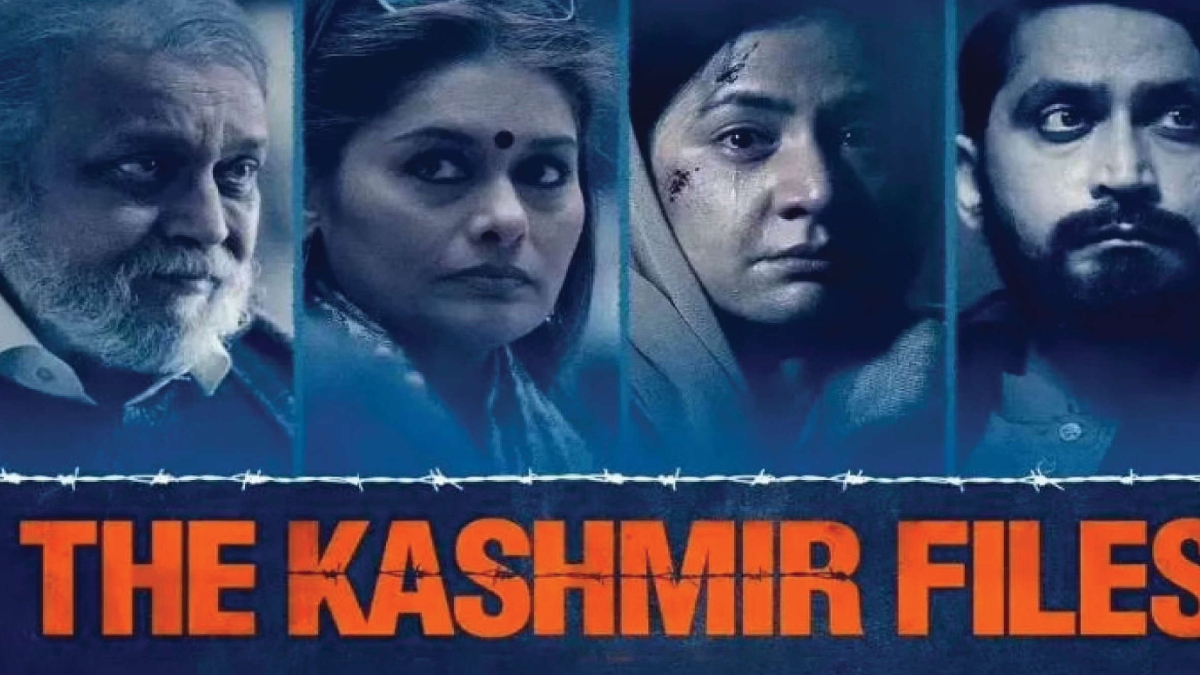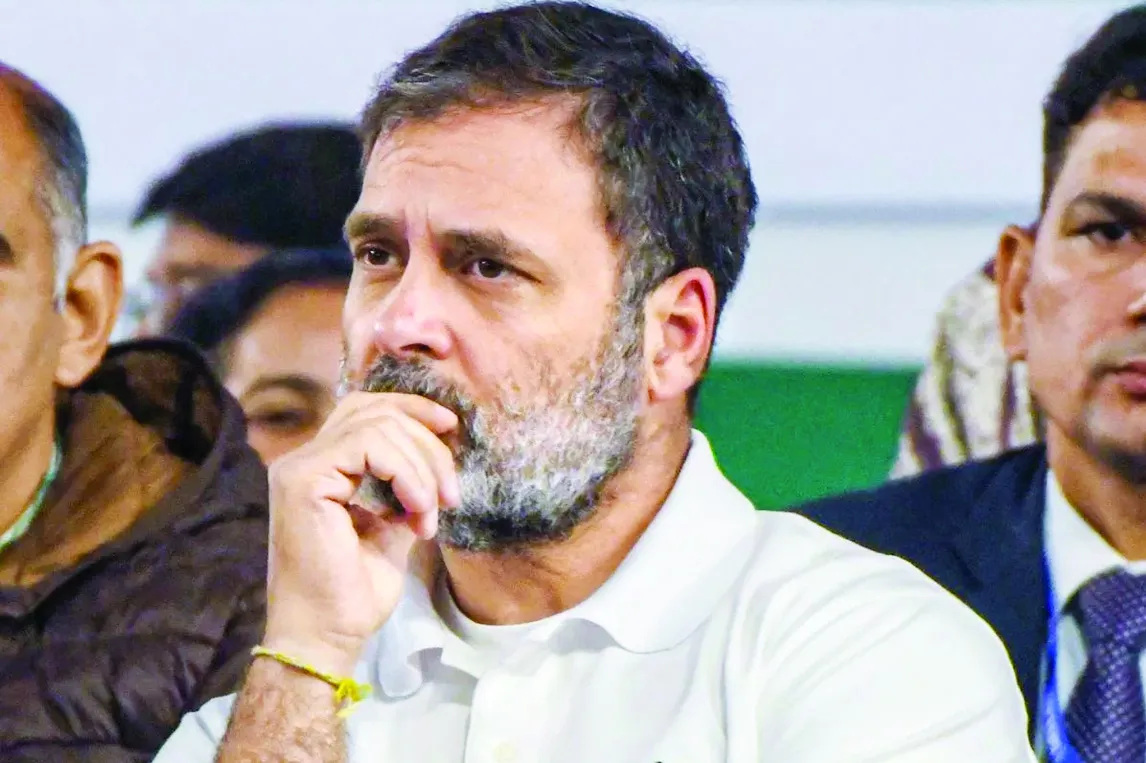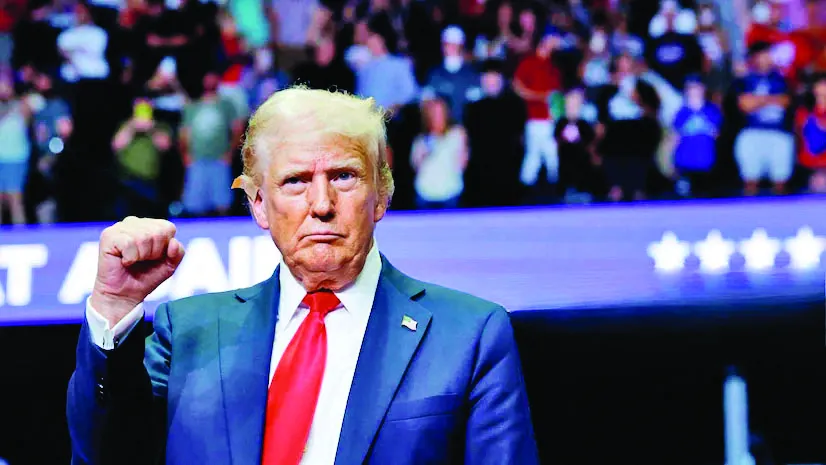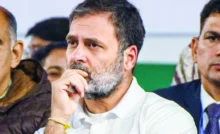It is sad the way Delhi Chief Minister Arvind Kejriwal mocked the “Kashmir Files”, a film that exposed the horrifying struggles of Kashmiri Pandits during the late 1980s and especially on the fateful night of January 19, 1990, when a diktat was announced for them to leave the Valley, leaving behind their women. This is perhaps the most pugnacious exodus of all in the history of mankind.
The Kashmiri Pandits’ Teachers’ Association, too, has expressed ire at the way Delhi CM had lied about appointing Kashmiri Pandits as teachers. In his statement, Kejriwal told a white lie as he had always opposed their appointment in the various courts. The way his MLAs were laughing proved that AAP people lack sensitivity and humaneness.
Tears welled up in my eyes after watching the “Kashmir Files”. As a law-abiding Indian citizen and Indian Muslim, my heart is shattered to smithereens, having witnessed the dastardly and demoniac killings by the terrorists in Kashmir over the years. For the first time, the massacre of Kashmiri Pandits has been well brought about in terms of a film for the world to know. A major concern must be that after watching the film, the divide between Hindus and Muslims shouldn’t be broadened, rather it should be diminished.
However, after this film, the main focus of the government should be to rehabilitate the Kashmiri Pandits rather than using them.
What’s still more lamenting has been that no Muslim group has taken to roads condemning the 1990 killings and exodus. This type of barbaric and mindless killing is unacceptable. It became even more heart-rending when some spokesperson from the National Conference stated that the Gujarat Muslim killings too should get the same focus. This balancing act and apologist approach have been the bane of the nation as Kashmiri Hindus and Muslims, over the centuries, have been gelling like sugar and milk. Some opposition leaders are accusing the “Kashmir Files” of vitiating Hindu-Muslim relationship and communalising it for the pernicious vote bank politics.
This Hindu-Muslim bandwagon that started in 1947 hasn’t waned to date. Humanity seems to have dropped to abysmal levels, especially among Kashmiri Muslim representatives like the Muftis and Abdullahs.
Time and again, the mindless butchering in Kashmir proved that all Muslims are not terrorists but all the terrorists are Muslims. Besides, as stated by Junaid Azeem Mattoo, the Mayor of Srinagar, the attempt was to terrorise the increasing flux of tourists as a minimum of 30-40 flights had been landing at Srinagar.
One can’t deny the laxity in the system as pointed out by Sushil Pandit and Lalit Ambardar, both Kashmiri migrants, that this government, during the last seven years, should have rehabilitated at least 25 percent of displaced Kashmiri Pandits if not all of them. Besides, it is high time that a separate ministry is created for the rehabilitation of the displaced Pandits.
Some time ago, Dattatreya Hosbale, the RSS general secretary, had stated rightly that the displaced Kashmiri Pandits should now return to their homeland, that is, Kashmir Valley with the assurance of their safety and security. Unfortunately, politics has warmed up as there’s a lobby of the of JKLF (Jammu & Kashmir Liberation Front), APHC (All Party Hurriyat Conference) besides others that is against this.
Nevertheless, Hosbale’s idea is on the lines of humaneness and democratic principles. Besides, he has to ensure with the present governance including the NSA that their resettlement must be full of tranquility unlike what has been happening with them for the last so many decades in the name of turning Kashmir into an Islamic state. If these Kashmiri Pandits are to be rehabilitated, the paramount need of the hour according to Prof Sushila Bhan, an octogenarian, is the cleansing of hearts on both sides.
When the Pandits go back, there shouldn’t be any feeling of avenging the wrongs done unto them in the past and as large-hearted brethren, the Kashmiri Hindus too must not only welcome but help out in their resettlement.
“Har chehra yahan chand hei, har zarrah sitara/ Yeh vadi-e-Kashmir, hai Jannat ka nazzara!” These lines from Abroo, a Hindi film duet song, sung by Mohammed Rafi and Asha Bhosle, during the mid-1970s implored me to tell my parents to take me to Kashmir for the summer vacation as the place was heaven, as God’s spot during that time but I remember that peace had just started deteriorating owing to the communalized ambiance since then though the disaster for Kashmiri Hindus began only in 1989 and 1990. Sad that the land of Sufi saints and sadhus like, Syed Bulbul Shah, Mir Sayyed Hamadani, Nand Rishi (Nooruddin Wali), Utpaldeva, Abhinavdeva, Bhagwan Gopinath, Lal Ded, Rupa Bhawani and many others but the heaven has been turned into hell.
Thirty years or more is a long time for a community to be disconnected from its home after being threatened, terrorized, raped and robbed of all its movable and immovable assets from 1990 onwards. While having my friends across the Hindu-Muslim blend of Kashmiri fraternity in India and abroad, I came across some heart-rending accounts as shared by Kashmiri Pandits, like Rahul Pandita, Shashi Bhan, Lalit Ambardar, Pankaj Bhan, Radhika Kaul, Sushil Pandit, Shashi Shekhar Toshakhani, Vijay Raina, Abhay Sopori, Amit Kilam and many others, I was apprised of many heart-rending tales on both sides.
Eventually today, at least eleven major militant organizations, and perhaps dozens of smaller ones, operate in Kashmir.
They are roughly divided between those who support 143 independence and those who support accession to Pakistan. The oldest and most widely known militant organization, the Jammu and Kashmir Liberation Front (JKLF), has spearheaded the movement for an independent Kashmir. Its student wing is the Jammu and Kashmir Students Liberation Front (JKSLF). A large number of other militant organizations have emerged since 1989, some of which also support independence, others of which support Kashmir’s accession to Pakistan.
Although all groups reportedly receive arms and training from Pakistan, the pro-Pakistani groups are reputed to be favored by Pakistan’s military intelligence, the Directorate of Inter-Services Intelligence (ISI). The most powerful of these is the Hizb-ul-Mujahidin. Other major groups include Al-Jehad, Al-Barq, Hizbullah, Ikhwan-ul-Muslimin, Jamait-ul-Mujahideen, Tehriq-ul Mujahideen, Allah Tigers, Al-Umar Mujahideen and Al-Umar Commandos. According to press reports, several hundred fighters from Afghanistan and Sudan have also joined some of the militant groups.
The major incident of the Kashmiri Pandits’ ethnic cleansing began on September 14, 1989, with a Kashmiri Pandit and political activist, Tika Lal Taploo, who was shot dead by armed men outside his residence as was done to Mahindroo.
On November 4, 1989, the high court judge in Kashmir Neelkanth Ganjoo was killed near the High Court in Srinagar. Besides, the Kashmiri Pandits’ massacres like Chamba massacre, Wandhama massacre, Chapnari massacre, Prankote massacre, murder of Gurudev Shanti Kali, Amarnath pilgrimage massacre and Kishtwar too took hundreds of lives by the militants to create the present-day situation when hardly a single Pandit family lives in Kashmir.
How this Kashmir problem began is the main issue.
Since 1947, the Valley of Kashmir has seen a lot of blood bath both Hindus and Muslims at the hands of the insurgents and terrorists. Since the mid-1970s, communalist rhetoric was being exploited in the state for vote bank politics. Around this time, Pakistan’s ISI and Wahabism in place of Sufism to foster religious unity within their nation, and the communalization aided their cause.
Sad to say that like in Swat valley of Pakistan where girls’ schools were burnt, in the same way, in Kashmir as well schools have been giving way to Wahabi madrasas.
I see no harm in the establishment of madrasas so far these are modernized with secular education alongside the advanced with the inclusion of English, Hindi, science and maths. Radicalization of Kashmir began in the 1980s when Sheikh Abdullah family changed the names of about 2,500 villages from their native names to new Islamic ones.
On January 4, 1990, a local Urdu newspaper, “Aftab”, published a press release issued by Hizb-ul-Mujahideen, asking all the Pandits to leave the Valley immediately. “Al-Safa”, another local daily, repeated the warning. Resultantly, on January 9, these warnings were followed by Kalashnikov-wielding masked Jehadis carrying out militarized marches openly threatening and killing Kashmiri Pandits who objected.
As the darkness ascended, the beleaguered and cajoled Kashmiri Pandit community became panic-stricken when the Valley began reverberating with the war cries of wayward militants, who had stage-managed the whole event with great care; choosing its timing and the slogans to be used. A host of highly provocative, communal and threatening slogans, interspersed with martial songs, incited the Muslims to come out on the streets and break the chains of “slavery”.
These slogans were mixed with precise and unambiguous threats to Pandits. They were presented with three choices — Ralive, Tsaliv ya Galive (convert to Islam, leave the place or be ready to perish). Bomb explosions and indiscriminate firing by the militants became a daily occurrence.
Between 1989 and 1991, over 95% of the Valley’s indigenous Hindu population was forced out through a targeted campaign of killings, rapes, threats, and destruction of property and religious sites, recounts Sushila Bhan.
Since then, about 63,000 families of displaced Pandits, Sikhs and some Muslims have been living in camps in Jammu or the NCR surrounding Delhi, as well as throughout the other neighbouring Indian states in India and abroad as well.
The ruthless ethnic cleansing of the Kashmiri Pandit community 32 years ago remains one of the darkest chapters in India’s modern history. The central and state government’s failure at that time to officially recognize them as “Internally Displaced Persons” and allow them to return to their homeland with the full dignity, security, and civil rights that they deserve, only amplifies this tragedy.
What is heart-rending is that for the last 32 years, the Kashmiri Pandits continue to fight for their return to the Valley but only on the guarantee that the situation improves. They have not done so because the state of affairs in the Valley remains unstable and they fear a risk to their lives.
Most of them lost their properties after the exodus and many are unable to go back and sell them. Their status as displaced people has adversely harmed them in the realm of education as many Hindu families could not afford to send their children to up-market public schools.
True, what Dattatreya has desired is something that should have been done almost three to two-and-a-half decades ago but the previous governments were weak-kneed, lacked resolve and the willpower like the present one that has amicably fixed issues like Ram temple, 370, Triple Talaq, Shaheen Bagh besides others. However; Dattatreya should also know that owing to the presence of the separatist and militant element in Kashmir, the return of the Pandits won’t be an easy nut to crack as the encroached properties the militants have captured won’t be easy to retrieve from their clutches. Nevertheless, if the NSA, army and the state police decide to provide a harmonious life to these original inhabitants, nothing is impossible. Kashmiri Pandits mustn’t be faced with a repeat of the 1990s.
The author is the former chancellor of Maulana Azad National Urdu University, Hyderabad and a community worker. Views expressed are personal.










